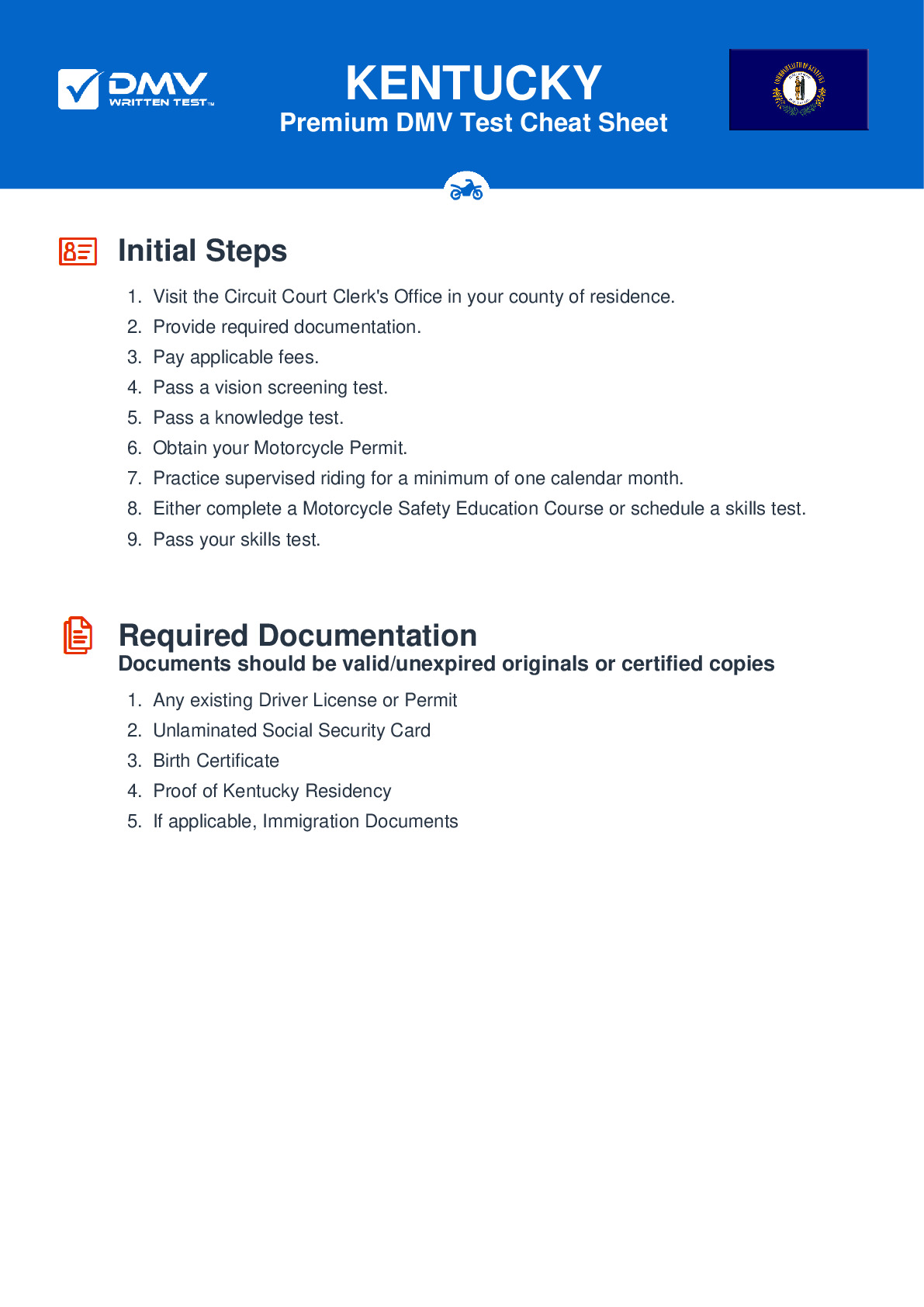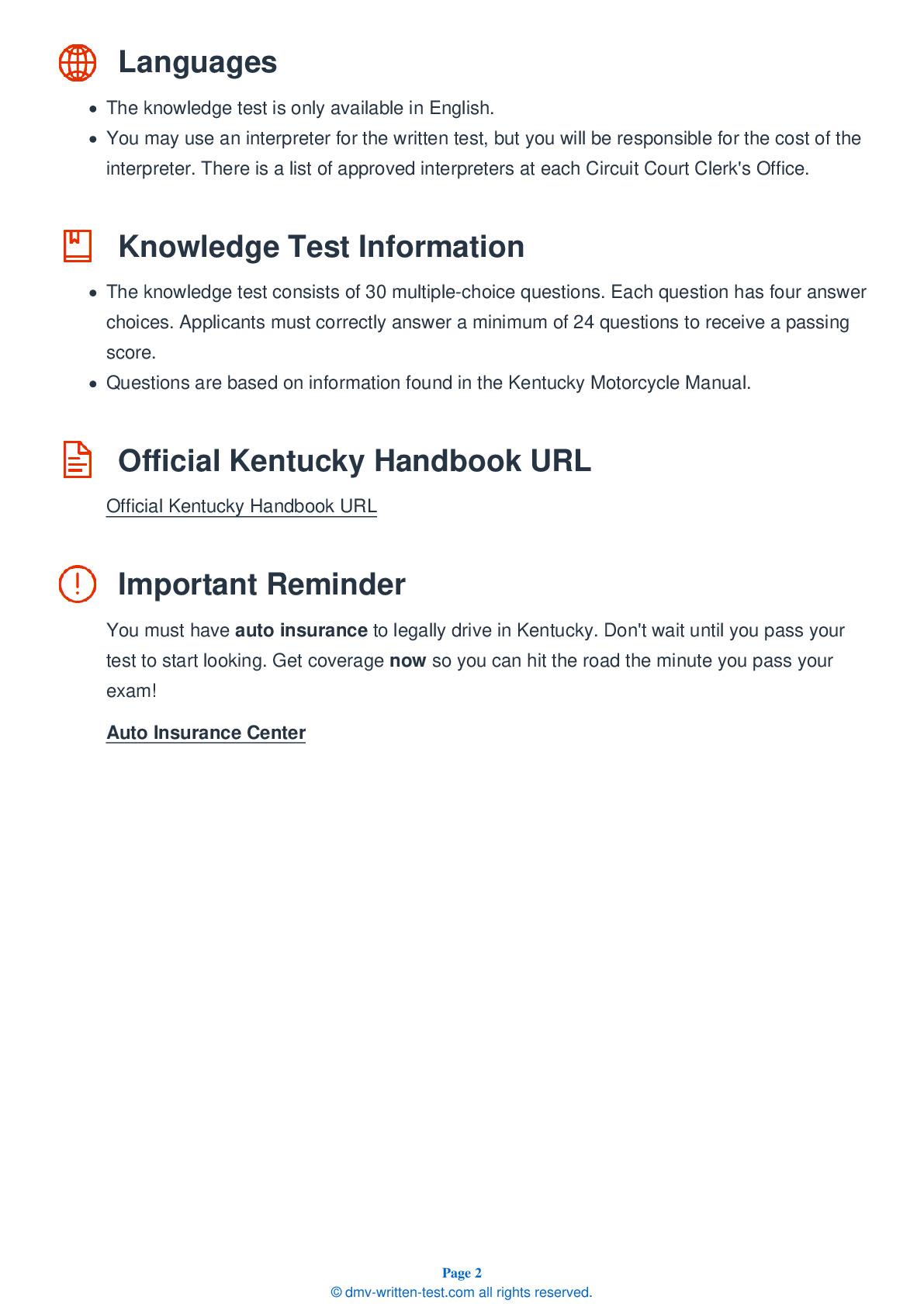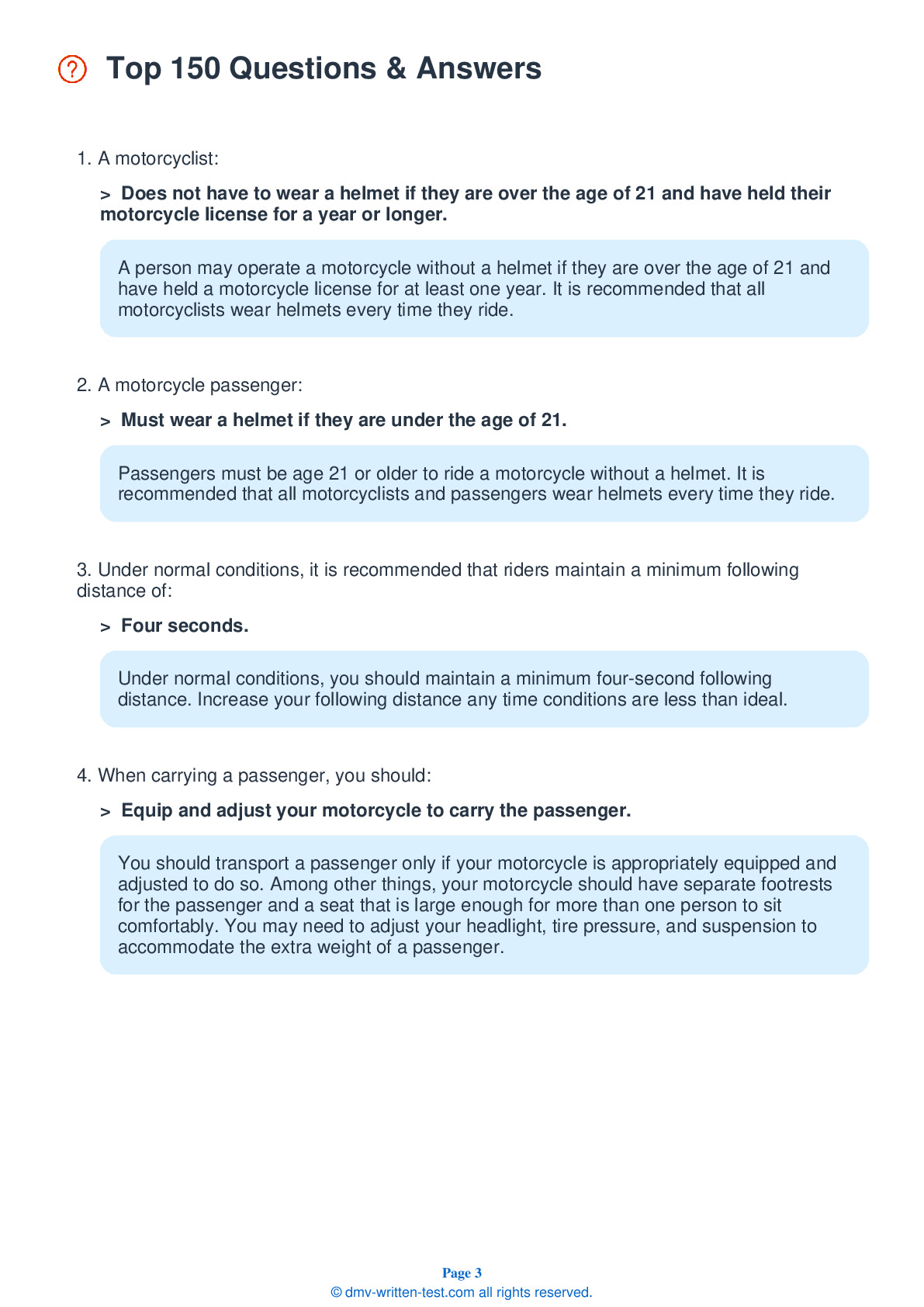2025 Kentucky Motorcycle Permit Test 13
The following questions are from real DMV written motorcycle permit tests. These are some of the actual permit questions you will face in Kentucky when getting your motorcycle learners permit. Each motorcycle theory practice test question has three answer choices. Select one answer for each question and select "grade this section." You can find this button at the bottom of the drivers license quiz. For a complete list of questions and answers for Kentucky please visit https://cheat-sheets.dmv-written-test.com/en/kentucky/motorcycle.
Number of Tests
Number of Question
Passing Score
15. If you must stop quickly in a curve, you should:
Explanation
If you must stop quickly while in a curve, you should first straighten and square the handlebars, then stop. If straightening your motorcycle is not possible, you should apply the brakes smoothly and gradually, reduce your lean angle, then increase the brake pressure as you slow down.
16. If you lock the rear tire on a good traction surface, you should:
Explanation
If you accidentally lock the rear brake on a good traction surface, you can keep it locked until you have completely stopped. You should still be able to steer your motorcycle with a locked rear wheel.
17. Which formation is best for a group of riders entering a curve?
Explanation
A staggered formation is generally the best way for a group to maintain close ranks while also allowing each rider to maintain an adequate cushion of space. A single-file formation is preferable when taking curves, turning, or entering or exiting a highway.
18. The front brake supplies how much of a motorcycle's potential stopping power?
Explanation
The front brake of a motorcycle is more powerful than the rear brake and can provide at least 70 percent of the motorcycle's total stopping power.
19. Which of the following will help you ride safely on slippery surfaces?
Explanation
When riding on slippery surfaces, reduce your speed, brake using both brakes, and avoid sudden moves. Avoid the center of the lane and instead follow tire tracks left by cars. Always keep an eye out for hazards that may make a road surface especially slippery, such as oil spots and loose gravel.
20. A helmeted rider is _______ more likely to survive a crash than a rider not wearing a helmet.
Explanation
No matter the speed, riders who are not wearing helmets are three times more likely to die from head injuries than riders who are wearing helmets at the time of a crash.
21. Which of the following is not a factor in determining blood alcohol content (BAC)?
Explanation




